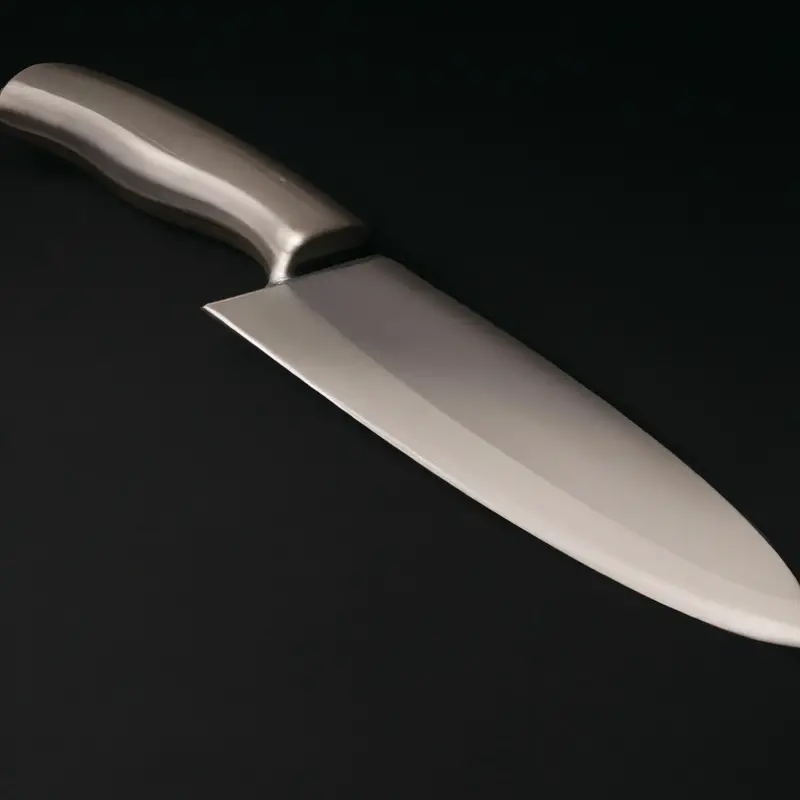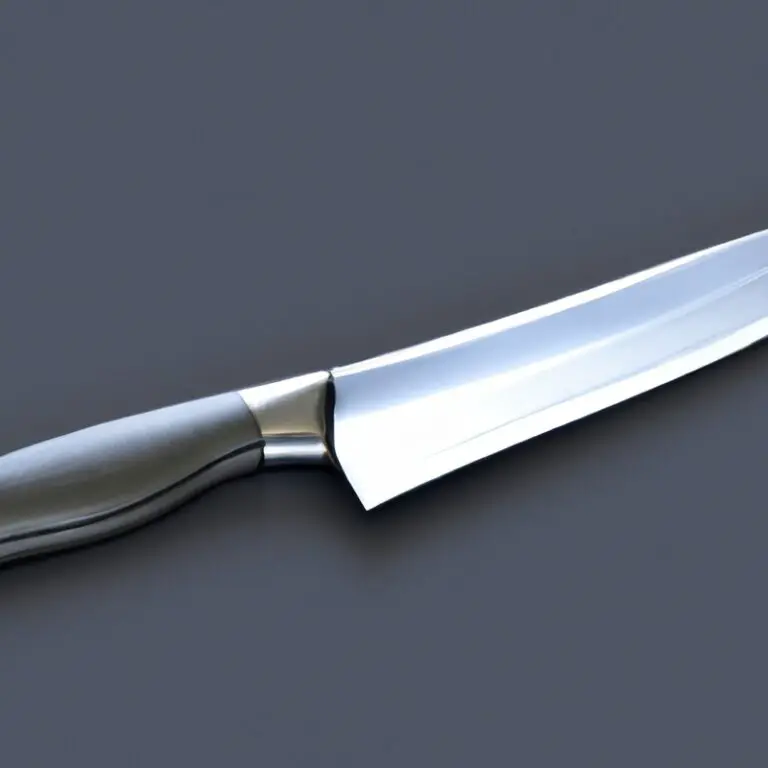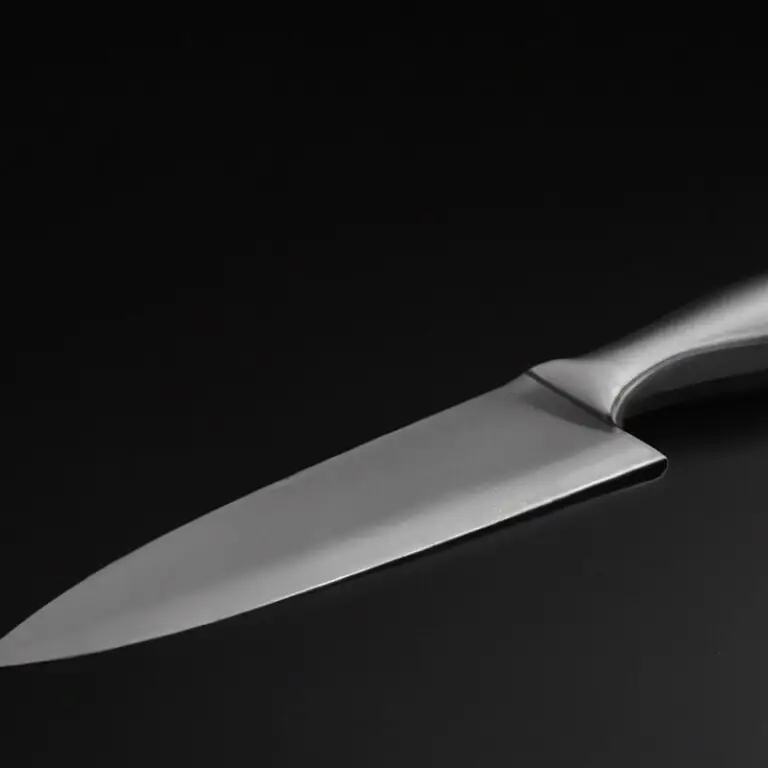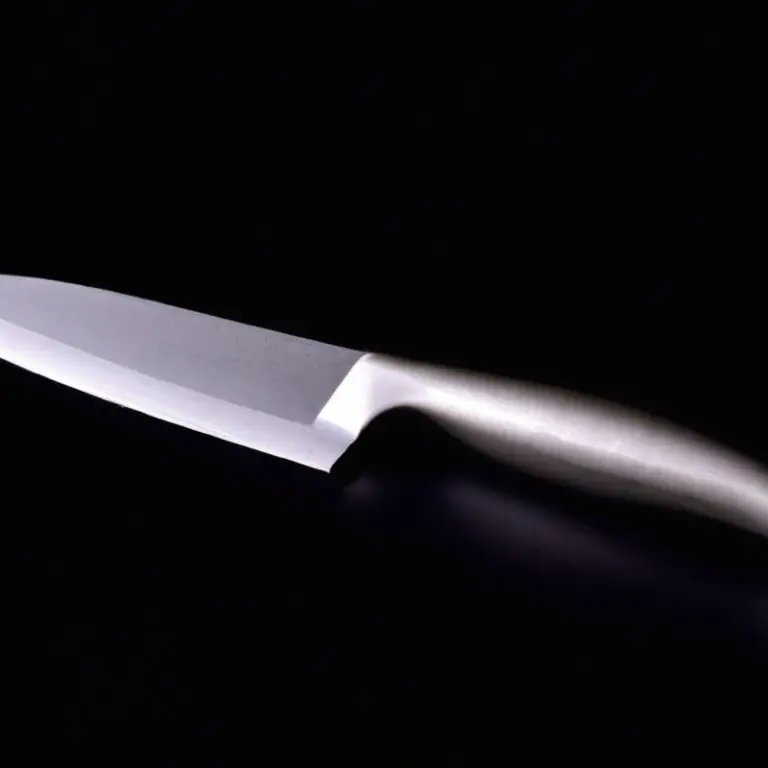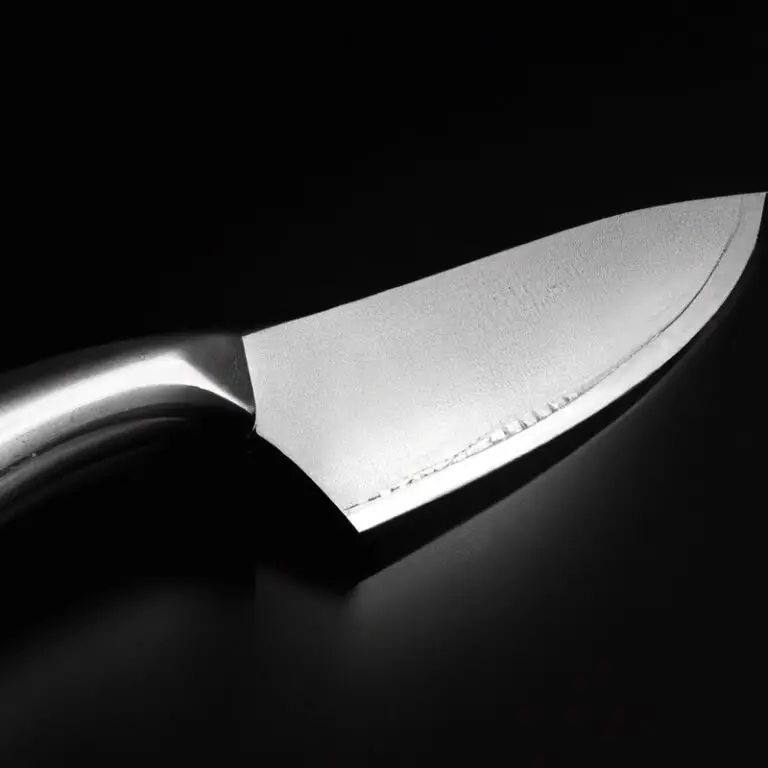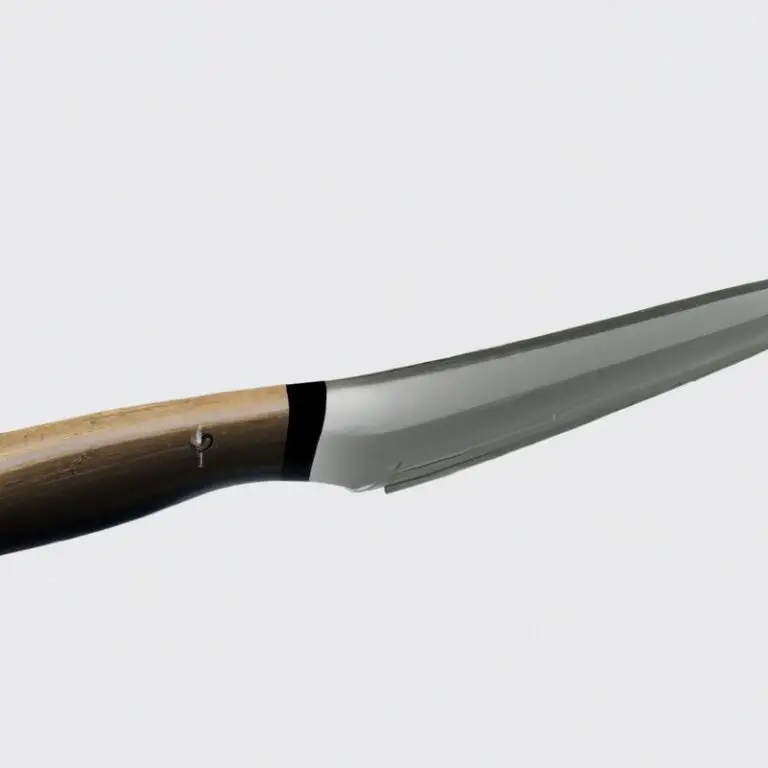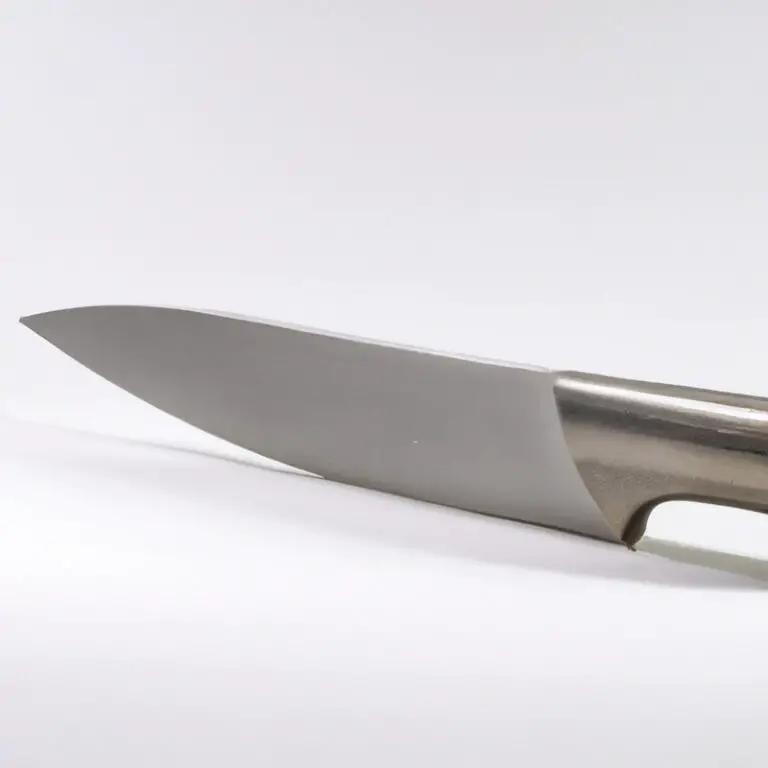Are Santoku Knives Suitable For Cutting Through Semi-Hard Cheeses? Expert Opinion
Key Takeaways:
- Santoku knives are not the best choice for cutting through semi-hard cheeses due to their shape and blade design.
- A serrated knife or a specific cheese knife is recommended for slicing through semi-hard cheese without damaging it.
- While Santoku knives are versatile and great for many kitchen tasks, it’s important to use the right tool for the job when it comes to cheese.
- Investing in a quality cheese knife can make a significant difference in the presentation and taste of your cheese platters.
As a self-proclaimed cheese aficionado and knife enthusiast, I’ve always wondered if the versatile Santoku knife could handle semi-hard cheeses. After all, its name means “three virtues” in Japanese, implying that it’s a multi-purpose tool.
In this article, we’ll explore the characteristics of semi-hard cheeses and the challenges they pose, as well as the pros and cons of using Santoku knives for cheese cutting.
I’ll share some tips on how to choose and use a Santoku knife to cut semi-hard cheeses, as well as how to maintain its quality. Plus, we’ll compare Santoku knives to other types of knives that can handle semi-hard cheeses and discuss other culinary applications of this exceptional knife.
| Santoku Knife | Semi-Hard Cheese | Suitability |
|---|---|---|
| Standard Blade Length | Gouda, Cheddar | Yes |
| Short Blade Length | Manchego, Parmesan | No |
| Hollow-Edge Blade | Gruyere, Swiss | Depends on the Knife |
Semi-hard Cheeses: Characteristics and Cutting Challenges
Semi-hard cheeses, such as cheddar, gouda, and Swiss, often have a firm texture and a mild to sharp flavor. Cutting through these cheeses can be challenging due to their semi-solid consistency.
The cheese may stick to the blade or break apart when using a knife not sharp enough, creating uneven slices.
The hard rind can also damage the knife’s edge. Thus, when cutting semi-hard cheeses, it is essential to use a knife specifically designed for the task to ensure clean cuts and minimize waste.
Santoku Knives and Cheese: Pros and Cons
Santoku knives have pros and cons when it comes to cutting semi-hard cheeses. These knives have a thinner blade and sharper edge, which make them ideal for precise cutting and chopping.
The Granton edge reduces cheese from sticking to the blade, which makes the cutting process much smoother and improves efficiency.
However, some Santoku knives lack the heft needed to cut harder, semisoft cheeses, such as Gouda or cheddar. Additionally, some Santoku knives may be prone to chipping when used to cut through hard rinds.
Nevertheless, choosing a high-quality Santoku knife made of durable steel and honing the blade regularly can help mitigate these issues.
Overall, Santoku knives are a viable option for those who cut semi-hard cheeses regularly.
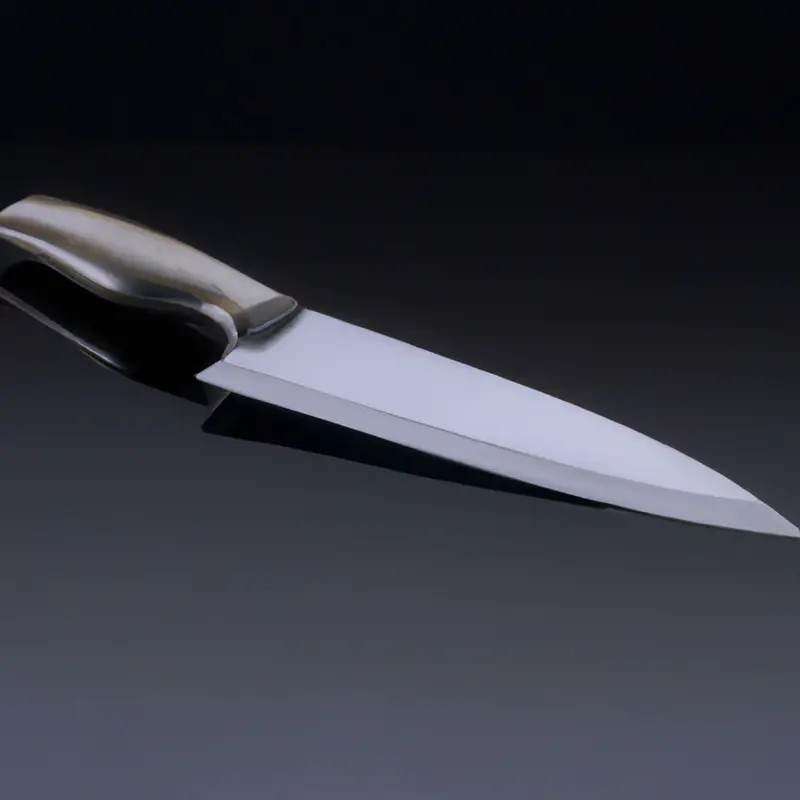
What Makes Santoku Knives Good for Semi-hard Cheeses?
Santoku knives are suitable for cutting semi-hard cheeses due to their wide, straight blades. This blade allows for even pressure distribution, resulting in clean slices without the cheese sticking to the blade.
Additionally, the sharp, thin blade design of Santoku knives allows for precision cutting, making it easier to slice through harder cheeses.
Overall, Santoku knives are a versatile tool for cheese cutting, suitable for both soft and semi-hard cheeses.
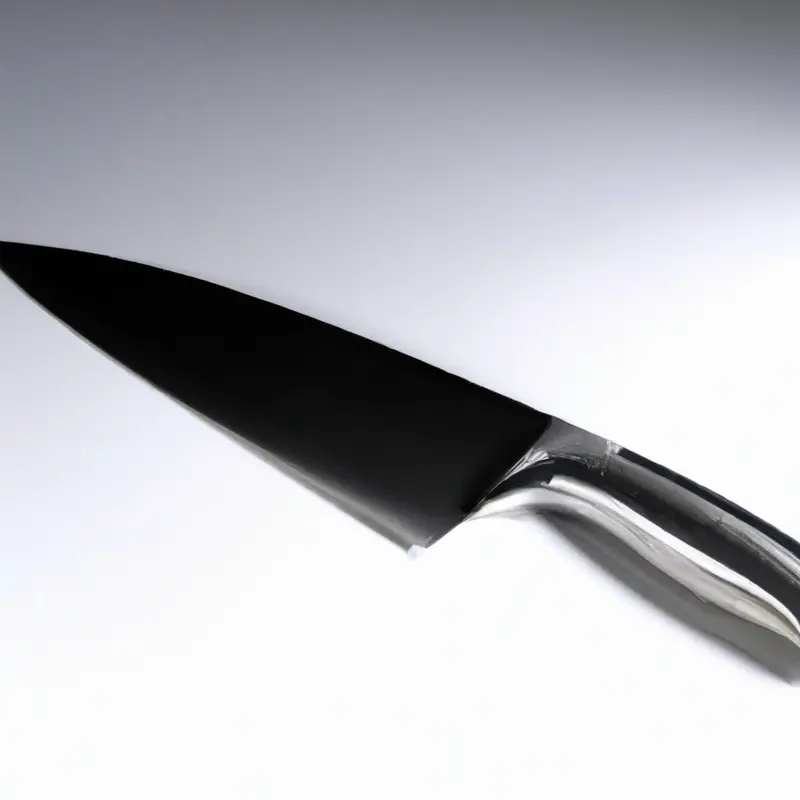
Factors to Consider When Choosing a Santoku Knife for Semi-hard Cheeses
When choosing a Santoku knife for semi-hard cheeses, you should consider the following factors:
- Blade Length: A Santoku knife with a blade length of around 7 inches is ideal for cutting semi-hard cheeses.
- Blade Edge: Look for a Santoku knife with a sharp, serrated edge that can easily slice through the tough outer rind of semi-hard cheeses.
- Blade Thickness: A thinner blade will provide greater accuracy and precision when cutting semi-hard cheeses.
- Handle Grip: Choose a Santoku knife with a comfortable grip that feels secure in your hand, especially if you’ll be cutting a lot of cheese.
- Blade Material: High-quality steel with a high carbon content is recommended for its durability and ability to retain sharpness.
By considering these factors, you can choose a Santoku knife that will make cutting semi-hard cheeses easier and more efficient.
How to Cut Semi-hard Cheeses with a Santoku Knife
To cut semi-hard cheeses with a Santoku knife, follow these simple steps:
- Begin by ensuring that your knife is sharp. A dull knife can make cutting hard cheeses more difficult and potentially dangerous.
- Place the cheese on a cutting board, and use a steady hand to make even slices. Start by cutting off the edge of the cheese to create an even surface.
- Use the tip of the Santoku knife to make an incision into the cheese at the edge of the slice you want.
- Next, use a seesaw motion to cut through the cheese, applying gentle pressure as you go. Move the knife back and forth in a rhythmic motion to slice through the cheese.
- If you encounter any resistance, pause and adjust the angle of the knife to avoid breaking or crumbling the cheese.
- Repeat the process until you have sliced the desired amount of cheese.
- Always use a clean and dry knife to ensure that it cuts smoothly through the cheese.
By following these easy steps, you can cut semi-hard cheeses with a Santoku knife like a pro. Remember to take your time and pay attention to the pressure you apply to the knife, and you will achieve great results every time.
Tips to Extend the Life of Your Santoku Knife When Cutting Cheese
To extend the life of your Santoku knife when cutting cheese, here are some tips you can follow:
- Choose the right cheese: avoid cutting cheese with hard rinds or bones that can damage the knife’s edge.
- Use a cutting board: using a cutting board made of soft materials like wood or plastic can protect the knife’s edge from unnecessary wear and tear.
- Maintain the knife’s sharpness: a sharp blade reduces the chance of slipping and exerting more pressure than necessary, which can lead to damage.
- Clean the knife after every use: cheese can leave a residue that is difficult to clean up. Wipe the blade down with a damp cloth after every use, and avoid soaking the knife.
- Store the knife properly: avoid leaving the knife exposed to moisture or air, which can lead to rust. Store the knife in a dry and cool place, preferably in a knife block or sheath.
By following these tips, you can extend the life of your Santoku knife and continue to enjoy its benefits when cutting through semi-hard cheeses.
Other Types of Knives for Semi-hard Cheeses: A Comparison with Santoku Knives
While Santoku knives are versatile tools for many kitchen tasks, various other knives can cut semi-hard cheeses just as well. For example, a chef’s knife is a popular all-purpose knife that can also handle semi-hard cheeses with ease.
It features a pointed tip and a curved blade that can efficiently cut through cheese without dragging or breaking it.
Meanwhile, a cheese knife is explicitly designed for cutting cheese. It has a unique blade shape with holes that prevent the cheese from sticking while cutting.
Another option is a paring knife, which is ideal for small and delicate cheese, such as goat cheese or feta.
Ultimately, the type of cheese and your preferred cutting technique will determine the ideal knife to use.
Care and Maintenance of Your Santoku Knife After Cutting Cheese
Care and Maintenance of Your Santoku Knife After Cutting Cheese: After cutting cheese with your Santoku knife, it is crucial to properly clean and maintain it to ensure its longevity and continued effectiveness. Here are some tips to keep in mind:
- Immediately after use, rinse the knife with warm water and dish soap to remove any cheese residue.
- Dry the knife thoroughly with a soft cloth or towel.
- Avoid soaking the knife in water or putting it in the dishwasher, as this can lead to rust and dulling of the blade.
- Use a honing steel to maintain the sharpness of the knife, as needed.
- Store the knife in a knife block or sheath, rather than loosely in a drawer, to prevent damage to the blade.
By following these simple steps, you can ensure that your Santoku knife remains in top condition for all of your cheese-cutting needs.
Culinary Applications of Santoku Knives Beyond Cheese Cutting: A Brief Overview
Santoku knives are versatile tools that can be used in various culinary applications beyond cheese cutting. Their unique design makes them ideal for chopping vegetables, slicing meat, and carving fruits, among other tasks.
The sharp blade and ergonomic handle provide control and precision, making them a favorite among chefs, home cooks, and food enthusiasts.
Whether you’re preparing a salad, stir-fry, or sushi, a Santoku knife can help you achieve the desired results. Their popularity continues to grow, and it’s not hard to see why.
So if you’re looking for a knife that can handle a variety of tasks in the kitchen, a Santoku knife is an excellent choice.
Final Verdict
A Santoku knife can be an excellent tool for cutting through semi-hard cheeses due to its unique design and blade geometry. However, it is crucial to choose the right type of Santoku knife and to use it properly to ensure optimal performance and longevity.
Remember to consider factors such as blade thickness, handle comfort, and cheese thickness when selecting a knife for semi-hard cheeses.
By following the tips and techniques discussed in this article, you can extend the life of your Santoku knife while enjoying delicious cheese platters with ease. Trust the expertise in this article and confidently add a Santoku knife to your cheese-cutting arsenal!

